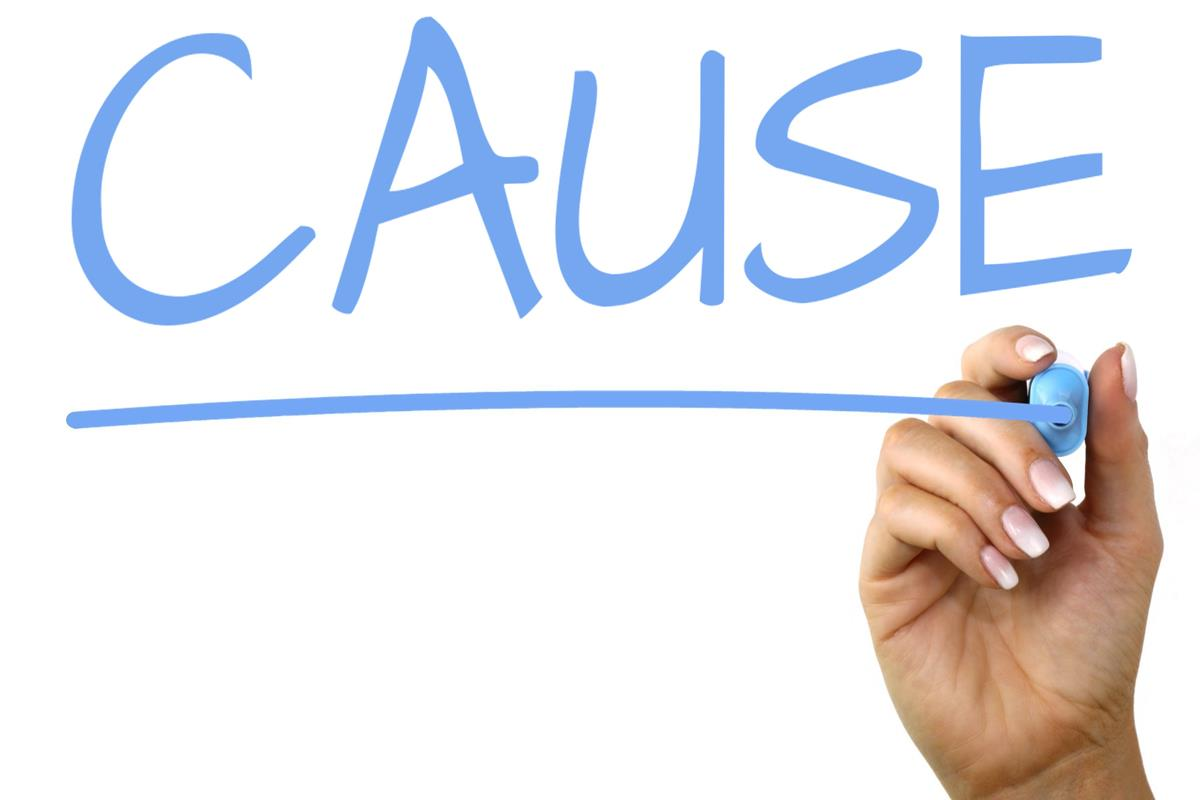Cluttering Speech Disorder: Symptoms, Causes, and Therapy
Cluttered speech, often misunderstood, creates real communication challenges. Let's explore this lesser-known disorder, fostering empathy and understanding for those navigating its complexities.
Join us as we explore the complexities of cluttered speech, aiming to increase awareness and promote understanding and compassion for those facing this unique communication challenge.
Key Takeaways:
Understanding Cluttering: Cluttering is a fluency disorder marked by disorganized speech, rapid or irregular patterns, and difficulty articulating thoughts clearly. It often starts around age eight and can involve additional auditory processing challenges.
Identification and Misconceptions: Distinguishing cluttering from stuttering and other speech disorders is crucial for accurate diagnosis and treatment. Cluttering involves rapid, disorganized speech without the physical tension typical in stuttering.
Causes and Management: Cluttering may stem from genetic, neurological, and language development factors. Effective management includes speech therapy techniques to reduce speech rate, self-monitoring, and building communication skills with support from professionals and loved ones.
Cluttering Defined
Cluttering is a fluency disorder characterized by disorganized speech planning, rapid or irregular speech patterns, and difficulty articulating thoughts clearly, which contrasts with fluent speech. It typically manifests around age eight and may be accompanied by auditory perceptual difficulties in some cases.
Speech-language pathologists play a significant role in screening, diagnosing, and managing fluency disorders such as cluttering.
Various factors can contribute to the development of cluttering, such as genetic predispositions, neurological discrepancies, and language development difficulties. Understanding the unique characteristics of cluttering helps speech pathologists diagnose and properly manage cluttering.
Characteristics of Cluttering
Cluttering presents itself in various ways, primarily affecting speech delivery and language features. One of the most prominent characteristics is the rapid rate of speech, exceeding normal tempos by 2-4 times, often accompanied by irregular fluctuations that create a "jerky" or "spurt-like" sound.
Sentences might lack natural pauses, with reduced duration and unusual placement, making them difficult to comprehend. Additionally, articulation errors like omitted, substituted, or distorted sounds further muddy the message.
Beyond delivery, cluttering impacts language itself. Unintentional, non-grammatical repetitions of syllables, words, or phrases occur frequently, disrupting the flow of communication. Thoughts might "outpace" speech, leading to incomplete sentences or abrupt shifts. Word substitutions are also common due to rapid processing and grammatical errors in sentence structure or word order.
Non-verbal signs may also be present. Increased facial tension, such as frowning or clenched jaw, reflects the effort involved in speaking quickly. Subtle tremors in the hands or body can manifest due to physical tension. In some cases, individuals might develop avoidance of speaking situations due to anxiety about negative reactions to their cluttered speech.
It's important to remember that cluttering can affect verbal and written communication and is sometimes associated with auditory processing disorders. The severity varies greatly, and not all characteristics will be present in every individual.
It's also crucial to differentiate cluttering from other disorders like stuttering, anxiety, or ADHD, as it requires specific therapeutic approaches to manage effectively. While the challenges can be significant across social, academic, and professional settings, seeking professional help offers valuable tools and strategies for improvement.
Misconceptions About Cluttering
Cluttering is often misunderstood and misdiagnosed as stuttering, even though it is a distinct speech disorder with unique characteristics. The reason for this misdiagnosis lies in the similarities between stuttering and cluttering symptoms, such as:
Rapid or irregular speech patterns
Excessive disfluencies
Difficulty organizing thoughts
Lack of awareness of speech errors
Differentiating between cluttering and stuttering is essential for providing appropriate treatment and support for individuals with these speech disorders.
Recognizing cluttering's unique features is key to distinguishing it from stuttering and other speech and fluency disorders. Understanding these distinctions is crucial for accurately diagnosing and treating cluttering.
Identifying Cluttering
To prevent confusion, cluttering must be distinguished from stuttering and other speech disorders, such as fluency disorders. The essential symptoms of cluttering include fluency and rate deviations, leading to communication disruption.
A speech-language pathologist is involved in the diagnosis of cluttering. The speech-language pathologist evaluates the associated risk factors, the degree of cluttering, and any other speech and language issues. Subsequent sections will tackle the differences between cluttering and stuttering and how cluttering interacts with other speech disorders.
Cluttering vs. Stuttering
Cluttering and stuttering are distinct fluency disorders, with cluttering involving rapid and disorganized speech and stuttering involving interruptions in speech flow. Cluttering is typically characterized by whole-word repetitions and unfinished words. Cluttering speakers produce rapid or irregular speech rates, while stuttering is identified by repetitions, prolongations, and blocks of sounds, syllables, or words.
A fluency disorder like cluttering can cause significant communication challenges despite individuals being able to articulate words clearly and form coherent sentences. Unlike stuttering, their rapid and disorganized speech lacks the repetitions, prolongations, and blocks seen in stuttering.
While cluttering might feature whole-word repetitions or unfinished words, the overall flow remains fast and irregular, contrasting with the interrupted flow characteristic of stuttering. Remember, both disorders warrant professional assessment and support to improve communication effectiveness and reduce anxiety related to speaking.
Moreover, cluttering may not usually involve physical tension, whereas stuttering often does. The onset of cluttering contrasts with that of stuttering in several ways. Cluttering behaviors do not generally involve apparent physical struggle, unlike stuttering, which often does.
Additionally, drawing attention to stuttering may initially lead to increased disfluencies, whereas cluttering often improves when the speaker is asked to slow down.
Accurate diagnosis and effective treatment rely on understanding the differences between cluttering and stuttering. Both disorders require unique approaches and strategies to address their challenges and symptoms.
Other Speech Disorders and Cluttering
Cluttering may coexist with other speech disorders, such as stuttering and apraxia of speech. The interaction between cluttering and other speech disorders may vary from person to person. For example, someone with aphasia may also present with cluttering symptoms, such as rapid or disorganized speech.
Coexisting speech disorders, such as stuttering and other learning disability, can pose a challenge when diagnosing cluttering. Accurate diagnosis is essential to implement suitable treatment strategies and management techniques, assisting individuals with cluttering to enhance their language skills and overall quality of life.
Causes of Cluttering
Cluttering may be caused by a combination of genetic factors, neurological differences, and language development issues. Understanding potential causes of cluttering aids in formulating effective treatment plans and providing targeted support.
The following sections will detail each potential cause - genetic factors, neurological differences, and the role of language development in the onset and progression of cluttering.
Genetic Factors
Some evidence suggests a genetic component to cluttering, but more research is needed to confirm this. Studies on persistent developmental stuttering, a related speech disorder, have identified several genes that may be implicated.
However, the precise genetic factors contributing to cluttering are not yet well-established, and more research is needed to elucidate the genetic basis of this fluency disorder.
Neurological Factors
Preliminary findings indicate differences in cortical and subcortical brain activity in individuals with cluttering, but further research is required. Some potential areas of dysregulation include:
The anterior cingulate cortex
The supplementary motor area
Increased activity in the basal ganglia
Increased activity in the premotor cortex
These areas may be implicated in the disorder, but more research is needed to understand the neurological basis of cluttering fully.
The anterior cingulate cortex and supplementary motor area are involved in speech production, and abnormalities in these regions may contribute to the rapid and disorganized speech patterns characteristic of cluttering. More research is required to understand the impact of neurological differences on cluttering and to devise targeted interventions for those affected.
Language Development
Language development may play a role in cluttering. Language planning disturbances may cause disfluencies and misarticulations, contributing to the symptoms of cluttering.
Grasping the impact of language development on cluttering helps in customizing interventions and offering suitable support.
Managing Cluttering
Managing cluttering involves speech therapy techniques, building communication skills, and establishing support systems. A speech-language pathologist can address the multiple facets of cluttering to help individuals improve their overall speech and social interactions.
The following sections will detail specific speech therapy techniques for cluttering, the significance of enhancing conversational skills, and the role of support systems in managing this disorder.
Speech Therapy Techniques
Speech-language pathology techniques for cluttering focuses on the following areas:
Reducing speech rate
Self-monitoring
Fluency techniques
Articulation
Language
Speech motor planning
Addressing these areas in speech therapy can help individuals with cluttering enhance their speech clarity and diminish their tendency to speak quickly or irregularly.
Exercises utilized to reduce the rate of speech in cluttering include:
Decreasing speech rate
Utilizing a slow speech strategy
Inserting pauses
Diaphragmatic breathing exercises
These techniques can be taught during speech sessions. They help those with cluttered speech enhance their rate and clarity, reducing the symptoms commonly associated with cluttering.
Self-monitoring is another crucial aspect of managing cluttering. Teaching clients about cluttering, using checklists and rational techniques, helps them become aware of their cluttering behaviors and facilitates them to observe their speech patterns and recognize occurrences of cluttering. By carefully monitoring their significant speech problem, individuals can adjust and apply strategies to manage and reduce cluttering.
Speech-language pathologists significantly contribute to the field of speech-language pathology by providing personalized treatment plans and strategies for individuals with cluttering. By working closely with clients in speech pathology, they can help them improve their communication skills, overcome social or vocational challenges, and lead more fulfilling lives.
Cluttering Speech Therapy
Check out our blog on Cluttering Speech Therapy for more information!
Building Communication Skills
Developing effective communication skills and strategies can help individuals with cluttering improve their speech and social interactions. Some effective communication strategies for individuals with cluttering include slowing speech, practicing pausing and emphasizing sounds and syllables, and tailoring treatment to address individual needs and goals.
Listening plays an indispensable role in constructing communication aptitudes for people with cluttering. Attentive listening and comprehension are essential for enhancing communication skills and preventing communication breakdowns in cluttering. Practicing active listening, engaging in mindful organization, and journaling are some techniques that can help individuals with cluttering build their communication skills.
In addition to speech therapy, individuals with cluttering can also benefit from:
Support systems, such as family, friends, and professionals, who can provide guidance, encouragement, and understanding
Staying on track with their treatment goals
Fostering a sense of belonging and acceptance
These support systems can greatly assist individuals with cluttering in their journey toward improvement.
Support Systems
Support systems, including family, friends, and professionals, play a crucial role in managing cluttering and fostering success in daily life. Family and friends can provide emotional support, assist with therapy exercises, and help create a supportive environment for individuals with cluttering.
Professionals, like speech-language pathologists, offer assessment, diagnosis, and therapy to assist individuals in managing their cluttering speech disorder. They collaborate with individuals who clutter to formulate individualized treatment plans and strategies to enhance communication skills. Furthermore, professionals treating cluttering may also analyze conceptual frameworks to refine their treatment approaches.
Living with Cluttering
Living with cluttering requires self-advocacy and implementing strategies for success in various aspects of life. By embracing self-advocacy and learning to navigate challenges, individuals with cluttering can lead fulfilling lives and overcome social or vocational obstacles.
The following sections will detail the importance of self-advocacy for individuals living with cluttering and strategies for success in personal, academic, and professional settings.
Self-Advocacy
Individuals with cluttering should learn to advocate for themselves, ensuring their needs and voices are heard. Self-advocacy is essential for individuals living with cluttering as it empowers them to take charge of their lives, encourages autonomy, and imparts a feeling of achievement.
Acquiring self-advocacy skills can be accomplished by cultivating self-assured attitudes, bolstering self-esteem, and enhancing social skills. By informing others about cluttering, participating in support groups or advocacy organizations, and maintaining a balance between self-assertion and attentiveness to others' perspectives, individuals with cluttering can effectively advocate for themselves and lead more fulfilling lives.
Strategies for Success
Implementing strategies for success, such as slowing down speech, practicing mindfulness, and utilizing support systems, can help individuals with cluttering thrive in their personal, academic, and professional lives. Slowing down speech, for example, can assist individuals with cluttering by improving their speech clarity and diminishing the tendency to speak quickly or at irregular rates.
Practicing mindfulness techniques, such as deep breathing, meditation, and body scan meditation, can also benefit individuals with cluttering. These techniques can help reduce stress, promote relaxation, and improve focus, all of which can contribute to more effective communication and better overall well-being.
Utilizing support systems, including family, friends, and professionals, is another crucial aspect of achieving success for individuals with cluttering. These support systems can provide guidance, encouragement, and understanding, helping individuals with cluttering to stay on track with their treatment goals.
Frequently Asked Questions
1. Who is most likely to be affected by cluttering?
Cluttering affects diverse individuals, but studies suggest it appears more frequently in males and may have a genetic component. While exact figures are elusive, estimates place its prevalence around 1% of the population.
2. Do speech exercises help some who clutters achieve more fluent speech?
Speech therapy offers a comprehensive approach to managing cluttering effectively. Practicing paced speaking, controlled breathing, and mindful articulation can help individuals gain awareness and improve speech clarity.
3. Can you address cluttering with online speech therapy?
Yes, online speech therapy can be an effective option for adults and children. It allows access to qualified professionals regardless of location and offers flexibility in scheduling. However, the success depends on several factors: the severity of the cluttering, individual needs, and speech-language pathologist expertise in online delivery.
4. Does someone who clutters also experience disorganized language?
Yes, disorganized language can be present in cluttering, though not always. While rapid speech and unclear articulation are key features, some individuals exhibit word substitutions, incomplete sentences, and grammatical errors due to rushed thoughts. However, unlike other language disorders, the meaning and structure of the message itself are usually intact, just delivered quickly and potentially fragmented.
How Connected Speech Pathology Can Help You
Connected Speech Pathology provides comprehensive support in understanding and managing cluttering. Our expert speech pathologists are adept at assessing the symptoms and identifying the underlying causes of cluttering in individuals.
Connected Speech Pathology develops personalized management plans to address cluttering, combining speech and language interventions. Therapy may involve techniques to improve speech rate, enhance articulatory precision, and foster organizational skills in communication.
Speech pathologists work collaboratively with individuals to develop awareness of their speech patterns and implement strategies to improve overall communication effectiveness.
Connected Speech Pathology empowers individuals to overcome the challenges associated with cluttered speech, fostering clearer and more efficient communication in various contexts by providing a holistic approach to cluttering management.
Summary
Understanding cluttering is essential for providing effective support and treatment to those who experience this fluency disorder. Throughout this article, we have explored the definition, characteristics, misconceptions, identification, and causes of cluttering.
Living with cluttering requires self-advocacy and implementing strategies for success in various aspects of life. By embracing these strategies and fostering a strong support network, individuals with cluttering can lead fulfilling lives and overcome social or vocational challenges.
About the Author
Allison Geller is a communication coach, speech-language pathologist, and founder of Connected Speech Pathology, an international online practice providing professional communication coaching and speech therapy for children, teens, and adults. With more than two decades of experience, she has worked in medical and educational settings, published research on aphasia, and leads a team of specialists helping clients improve skills in public speaking, vocal presence, accent clarity, articulation, language, fluency, and interpersonal communication.










